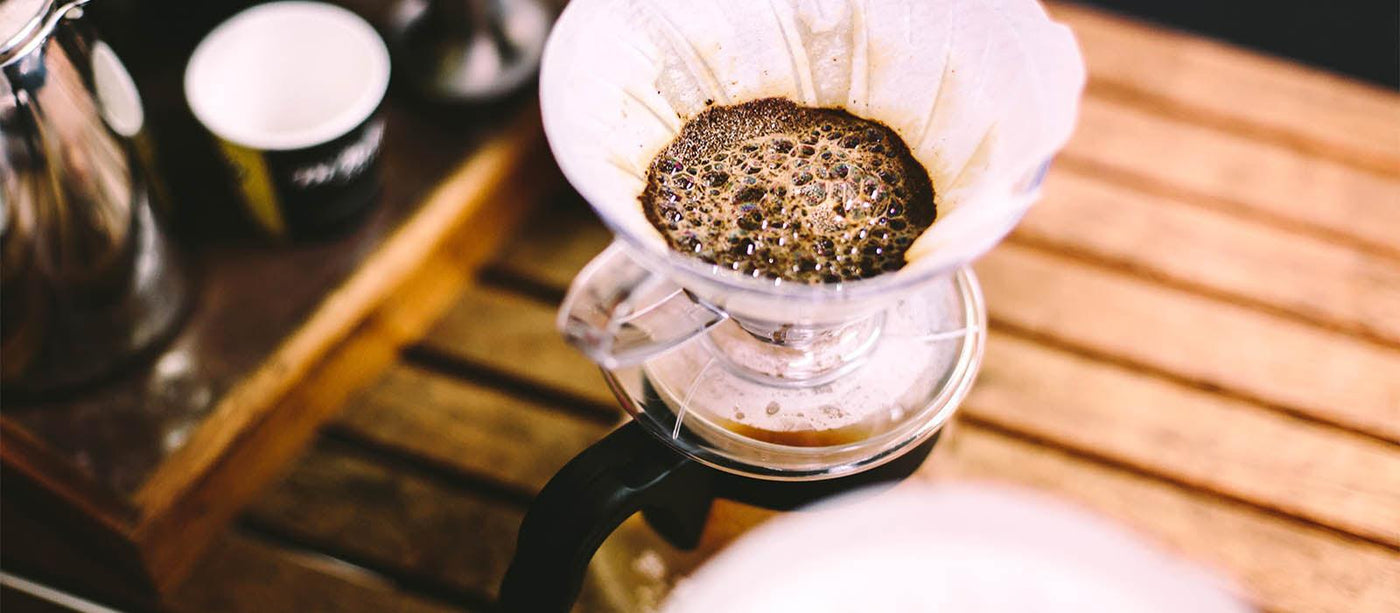The Ultimate Comparison of Popular Coffee Brewing Methods for Home Baristas
The Ultimate Comparison of Popular Coffee Brewing Methods for Home Baristas
Blog Article
Exploring the Art of Coffee Developing: A Comprehensive Guide to Developing Your Mug
The art of coffee brewing is a complex technique that combines scientific research with personal expression, where the option of beans, water high quality, and brewing approaches assemble to produce a polished sensory experience. Recognizing the nuances of various coffee beans, especially the differences in between Arabica and Robusta, is essential for any type of aficionado. In addition, the choice of suitable equipment and careful focus to developing criteria can significantly affect the final end result. As we discover these components, one must consider exactly how even small changes can bring about extensive changes in flavor and fragrance-- what might these changes disclose about your perfect cup?
Comprehending Coffee Beans
To truly appreciate the art of coffee developing, one must initially understand the foundational aspect: coffee beans. These tiny seeds, typically derived from the Coffea plant, are critical in establishing the flavor account, aroma, and overall high quality of the brewed drink. Coffee beans primarily fall under 2 classifications: Arabica and Robusta. Arabica beans, known for their fragile flavors and greater level of acidity, are commonly favored by lovers. On the other hand, Robusta beans have a more powerful, much more bitter preference and higher high levels of caffeine material, making them appropriate for coffee blends.

Additionally, the handling method-- whether washed, natural, or honey-- impacts the beans' final preference. Understanding these aspects allows brewers to select the appropriate beans that straighten with their liked flavor account, eventually improving the coffee developing experience. coffee brewing methods. This understanding is necessary for anyone aiming to master the craft of brewing the best cup of coffee
Developing Methods Described
Several fanatics locate that the option of developing technique significantly influences the last taste and aroma of their coffee. Each approach utilizes various extraction strategies, affecting the coffee's personality and splendor.
Drip developing, one of one of the most prominent methods, uses a machine to leak warm water through ground coffee, producing a tidy and regular mug. French press, on the other hand, immerses coffee premises in hot water, enabling a fuller body and even more durable flavor, as oils and fine fragments remain in the mixture.
Pour-over developing offers a meticulous method, where water is by hand put over coffee grounds, enabling accurate control over removal time and temperature level, causing a brilliant and nuanced mug.
Coffee, a focused coffee brewed under stress, is recognized for its solid flavor and luscious appearance, working as the base for different coffee drinks, consisting of cappuccinos and lattes.
Important Equipment Required
The structure of any type of successful coffee developing procedure exists in top quality tools tailored to your favored technique. A trustworthy coffee grinder is vital; newly ground beans significantly boost flavor and scent.
Following, consider your brewing gadget. Alternatives range from drip coffee makers and pour-over arrangements to French presses and espresso makers. Each approach provides unique taste profiles and brewing methods, so pick one that aligns with your taste choices.
A precise scale is likewise invaluable, enabling you to determine coffee and water properly, which is vital for consistency. Furthermore, a thermostat can aid monitor water temperature, as it directly influences removal top quality.
Learning Water Top Quality
The high quality of water utilized in brewing coffee plays a significant role in identifying the final flavor profile of the mug. Numerous factors add to water top quality, consisting of mineral web content, pH degree, and general purity. Ideally, water should be without impurities and contaminations, as these can negatively impact the taste of coffee.
Minerals, such as calcium and magnesium, boost the removal of flavors from the coffee grounds, while maintaining a well balanced pH level-- around 6.5 to 7.5-- is vital for ideal extraction. Water that is too soft might cause under-extraction, resulting in sour or weak tastes, while excessively difficult water can produce a bitter or rough mug.
For the very best results, check these guys out filtered water is advised, as it minimizes the existence of chlorine and other unwanted materials typically found in faucet water. Furthermore, consider making use of water with an Overall Dissolved Solids (TDS) degree between 150-200 ppm, which is generally excellent for coffee developing. By mastering water high quality, you can lay a solid structure for achieving a continually exceptional cup of coffee, enabling the unique features of your chosen beans to beam through.

Tips for Taste Improvement
Enhancing the flavor of your coffee can dramatically raise your developing experience and bring out the one-of-a-kind nuances of your selected beans. To attain this, think about numerous essential aspects that influence taste.
To start with, the grind size plays a critical role. A finer grind raises extraction, leading to bolder tastes, while a coarser grind yields a milder cup. coffee brewing methods. Readjust your grind according to your brewing technique to attain optimal results
Second of all, trying out brew time. Over-extraction can result in anger, while under-extraction lead to a sour taste. Objective for a mixture time that stabilizes these extremes, generally between two to four mins, relying on your approach.
Additionally, temperature is an important component. Developing with water that is too hot can scorch the coffee, while water that is as well great might fall short to extract sufficient flavor. The suitable temperature level array is 195 ° F to 205 ° F(90 ° C to 96 ° C)
Conclusion) )))) In conclusion, the art of coffee brewing is a diverse method that needs a deep understanding of different aspects, consisting of bean option, developing approaches, and water top quality. Proficiency of essential tools and focus to information in work dimension, brew time, and temperature are important for accomplishing ideal extraction. By integrating these parts, coffee fanatics can boost their developing methods, resulting in a cup that not just pleases personal preferences but additionally showcases the abundant intricacy of coffee flavors.
The art of coffee developing is a diverse discipline that combines science with individual expression, where the option of beans, water quality, and developing methods merge to create a polished sensory experience.To really value the art of coffee brewing, one must initially understand the fundamental element: coffee beans. Developing with water that is too warm can scorch the coffee, while water that is as well cool might fail to draw out adequate flavor. In verdict, Get the facts the art of coffee brewing is a diverse technique that needs a deep understanding of numerous elements, consisting of bean selection, brewing techniques, and water top quality. By integrating these elements, coffee fanatics can raise their developing techniques, resulting in a cup that not this page just pleases personal preferences yet also showcases the rich intricacy of coffee tastes.
Report this page